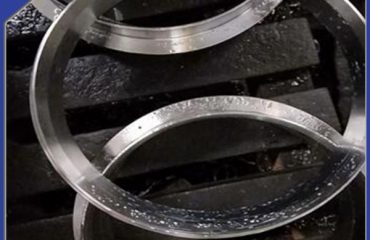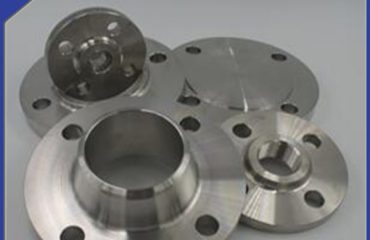Rubber joints generally use two types of flanges: cast flanges and forged flanges. According to the connection mode, rubber joints are divided into three types: loose flange type, fixed flange type and threaded type. When choosing a matching flange for rubber soft joints, first choose the size of the flange and whether the working pressure can reach the pressure you need. Next, you need to see whether the number of screw holes is rough, and whether the processing surface is smooth. Whether there is trachoma, whether the flange corners are flat, whether the water line of the sealing surface is uniform and beautiful, use a caliper to measure whether each size is qualified, especially each connection and size.
A pipe flange is a bridge used to establish a connection between two pipes. It can be used for dismantling piping systems, temporary or mobile installations, transitions between dissimilar materials, and connections in environments that are not conducive to bonding. Flanges are relatively simple mechanical connectors, which are especially widely used in high-pressure pipeline applications. It is recognized in the industry as being reliable and cost-effective. Compared with other mechanical connectors, the torque carrying capacity of flanges is very strong. This is an important function of a system that undergoes pipeline flow due to temperature and pressure changes (such as deep water pipelines). Flanges can be designed to meet various application requirements, such as high temperature and corrosion resistance.
The flange is flush with the pipe to which it is connected. The apertures in the surface are mechanically connected by bolts, collars, adhesives or welds. Join the materials by melting the workpiece and adding filler materials. For the solid, high-pressure connection of the material, it is often an effective method for flange connection. Most pipe flanges are designed to be attached to the pipe. Brazing is used to melt a material by melting a filler metal, which solidifies to act as a connection meson. This method will not melt the workpiece and cause thermal deformation, so as to achieve strict tolerances and clean joints. Many connection methods have unique characteristics, and there are other more important considerations for the selection of pipe flanges. The factors that consumers should consider are the physical specifications, types, materials, and application performance characteristics of the flange.
Cast steel flanges are cast flanges. The advantages are accurate blank shape and size, small processing volume, low cost, and can produce more complex shapes, but there are casting defects such as: pores, cracks, inclusions, trachoma, etc., inside the casting The streamline of the organization is poor, and the streamline of the cutting piece is worse. Forged flanges are forged flanges, which are generally heavier than cast ones, have low carbon content and are not easy to rust. The forgings are streamlined, the structure is relatively dense and uniform, and there is no trachoma. The mechanical properties are better than cast flanges. Of course, the cost is also higher than casting Lan, can withstand higher shear and tensile forces.
Flange installation In order to meet the above technical parameters, the flange must be installed in strict accordance with certain procedures, as follows: Gasket installation: After installing two bolts, insert a seal between the two flange surfaces, and then install the third One bolt, make the three bolts about 120 degrees apart, which can effectively reduce the gap between the two flanges and avoid leakage. After the gaskets are aligned, tighten and correct the flange gradually: Install the gasket between the surfaces of the flange, and tighten the nut by hand until the nut contacts the supporting surface, and slightly tighten the installed bolt after the gasket is aligned. Note that If this step is not carried out, the flange gasket will not be able to fit with the flange, and it will not play a role in preventing pipeline leakage.
 Language
Language Espanol
Espanol English
English Italian
Italian عربى
عربى
 Skype: chinamaker99
Skype: chinamaker99  Tel: 86-316-5120812
Tel: 86-316-5120812 Email:
Email:  Whatsapp:
Whatsapp: 
